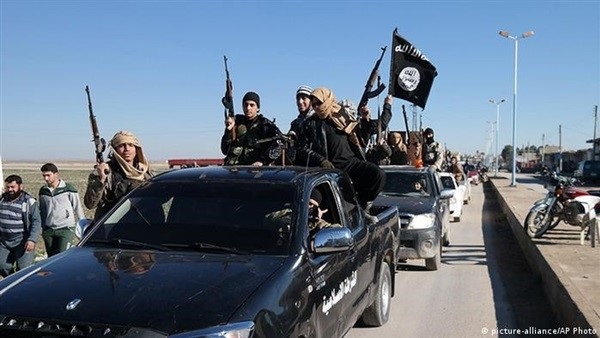Iraqi forces pursue ISIS remnants with air combat strategy

The Iraqi forces continue their ongoing war against ISIS
remnants, relying on a comprehensive strategy to completely
eliminate the organization by targeting its hideouts and safe havens, in
addition to targeting its leaders, whether by arrest or liquidation, as well as
carrying out pre-emptive strikes to paralyze its operational capabilities.
Recent months have witnessed successive strikes against ISIS
in places that were difficult to reach and where the organization’s members
chose to hide due to their rugged nature. However, the Iraqi forces have
developed their tools to confront the remnants of the organization, which is
losing its strength as these strikes continue, in addition to relying on air
strikes directed by the Iraqi government against ISIS hideouts.
Destruction of dens
Recently, the Joint Operations Command announced the
destruction of ISIS dens and hideouts and the killing of those inside them with
an air strike within the Tuz Khurmatu operations sector. The Joint Operations
Command said in a statement received by the Iraqi News Agency (INA) that the
painful strikes continue on the remnants of ISIS
terrorist gangs at the hands of the brave members of the Iraqi security forces.
The statement added that, according to accurate information from
the Iraqi National Intelligence Service (INIS) and under the supervision and
planning of the Targeting Cell/Joint Operations Command, the Air Force Command
carried out air strikes targeting caves and guesthouses containing members of
the defeated ISIS terrorist gangs in the mountains in the Tuz Khurmatu operations
sector.
The statement added that the dens were destroyed and those
inside them were killed, indicating that the armed forces are on the lookout
for anyone who tries to tamper with the security of citizens, and that Iraq
will remain a safe country with the strength and determination of its security
forces.
A statement by the INIS, received by INA, also stated that
the heroes of the Iraqi National Intelligence Service, in coordination with the
Joint Operations Command and with the support of the Air Force Command, were
able to target one of the most important ISIS terrorist hideouts in Saladin
Governorate.
The statement explained that the operation was carried out
based on accurate intelligence information and field and technical tracking of
ISIS members present in one of the guesthouses located in the mountains of Tuz
Khurmatu district. It added that a precise air strike was launched, followed by
a landing operation by the Counter Terrorism Service, noting that the operation
resulted in “the destruction of the guesthouse, the killing of everyone in it,
and the seizure of important documents and equipment belonging to terrorist
gangs.”
Air combat strategy
Iraqi expert Dr. Anmar Al-Droubi said in exclusive
statements to the Reference that there is no doubt that F16 aircraft had a
major impact on the reality of military operations in combating and fighting ISIS,
as the air combat strategy succeeded in toppling a
number of the organization’s members and paralyzing its field movement.
According to Droubi, the air force is simultaneously
carrying out reconnaissance operations and identifying potential targets, and
since the beginning of the operations to liberate Iraqi governorates and cities
from ISIS, the air force has had a major mission in aerial reconnaissance
operations and fighting against members of the organization, and after that,
reliance on the air force with F-16 aircraft continued and even increased to
pursue terrorists on Iraqi territory, as well as on the Iraqi-Syrian border.
Droubi added that the United States began in recent years to
support the Iraqi air force and supply it with F16 aircraft, and the increasing
reliance on F16 aircraft is consistent with the Iraqi military strategy, which
seeks to limit the capabilities of terrorists without getting involved in
direct clashes with them on their territory, especially when the organization's
members take refuge in mountainous areas with rugged terrain that are difficult
to access militarily, even with the use of special forces personnel.
He concluded his statements to the Reference by saying that
the F16 aircraft have proven very efficient in disrupting the work of ISIS,
because they limit and restrict the movement of the organization's members, as
well as cut off or reduce their communications and close their training camps
for fear of being targeted.







